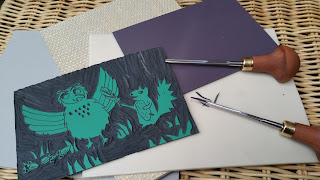It’s a wonderful time to be a reader. Apart from if you're reading this post - I can't get the font size to behave, apologies. Anyway...
There's talk of this being a 'new golden age' of children's literature. Looking at the shelves, I think that might be right.
New and established talents are creating some real gems. Sadly many adults buying books for children still like to shop 'safely' and pick up books by the same old household names - the school I volunteer at has a thing for Just William. But pick up something brand new and you're in equally safe hands.
 Today's authors and illustrators were raised on the classics. We've done our homework, learned from the masters plus been influenced by new sources and a changing world. We work with publishers who know what makes books great and who can't afford to create rubbish.
Today's authors and illustrators were raised on the classics. We've done our homework, learned from the masters plus been influenced by new sources and a changing world. We work with publishers who know what makes books great and who can't afford to create rubbish.

Roald Dahl will always be there, ditto Enid Blyton and Beatrix Potter. Classics are amazeballs, I agree! Nostalgia's nice! But how about discovering something fresh?
Have you seen what Philip Reeve and Sarah McIntyre are producing?! Alex T Smith? Will Mabbitt? Jonny Duddle? Swapna Haddow and Sheena Dempsey? Kes Gray and Jim Field? Laura James and Eglantine Ceulemans? I could go on FOREVER - but it's much more fun to pop to a book shop and browse.
There’s a book to turn every reluctant reader on to reading. There’s a book to help any reader suffering from Beast Quest/Rainbow Magic fatigue. The industry is even beginning to wake up to the fact that there need to be books in which every child can recognise themselves. ...Pity about the lack of libraries to connect children to any of these books, AND the lack of column inches dedicated to children's reading... but that’s another blog post entirely.
There's talk of this being a 'new golden age' of children's literature. Looking at the shelves, I think that might be right.
New and established talents are creating some real gems. Sadly many adults buying books for children still like to shop 'safely' and pick up books by the same old household names - the school I volunteer at has a thing for Just William. But pick up something brand new and you're in equally safe hands.
 Today's authors and illustrators were raised on the classics. We've done our homework, learned from the masters plus been influenced by new sources and a changing world. We work with publishers who know what makes books great and who can't afford to create rubbish.
Today's authors and illustrators were raised on the classics. We've done our homework, learned from the masters plus been influenced by new sources and a changing world. We work with publishers who know what makes books great and who can't afford to create rubbish. 
Roald Dahl will always be there, ditto Enid Blyton and Beatrix Potter. Classics are amazeballs, I agree! Nostalgia's nice! But how about discovering something fresh?
Have you seen what Philip Reeve and Sarah McIntyre are producing?! Alex T Smith? Will Mabbitt? Jonny Duddle? Swapna Haddow and Sheena Dempsey? Kes Gray and Jim Field? Laura James and Eglantine Ceulemans? I could go on FOREVER - but it's much more fun to pop to a book shop and browse.
There’s a book to turn every reluctant reader on to reading. There’s a book to help any reader suffering from Beast Quest/Rainbow Magic fatigue. The industry is even beginning to wake up to the fact that there need to be books in which every child can recognise themselves. ...Pity about the lack of libraries to connect children to any of these books, AND the lack of column inches dedicated to children's reading... but that’s another blog post entirely.
As this is my last post for the Picture Book Den I'd like to use it to ask a favour. If you love children's books, please SHOUT ABOUT THEM.
LOVE A BOOK, SHARE A BOOK
Try something new! Spread the word about great books!
Use and support libraries!
Give books as gifts!
Support independent book shops!
Tell people about books you’ve enjoyed!
Donate a book to your local school library!

Whose books have you fallen in love with lately? Please share a recommendation in the comments thread below - new or old. I’ll kick things off: I was struggling to find non-fiction history books that my son liked. He loves Horrible Histories on TV but really doesn't enjoy the books (which still seem to dominate the market...).
All hail MARCIA WILLIAMS! Marcia writes excellent non-fiction told in comic strip style. We're now binge reading her books and I'll be investing in a set for the school library at Christmas. Hooray for varied book shelves where you can still make new discoveries.
Please share a book below - no self promotion, please. Thanks so much - see you in the children's section!
____________________________
 Michelle Robinson is a best-selling picture book author. Her latest, ‘THE HAT THAT ZACK LOVES’, is illustrated by Robert Reader and publishes with Puffin in July 2017.
Michelle Robinson is a best-selling picture book author. Her latest, ‘THE HAT THAT ZACK LOVES’, is illustrated by Robert Reader and publishes with Puffin in July 2017.
x















































